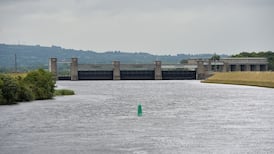It is difficult to comprehend the scale of a wind farm proposed for north Co Meath and the project would result in the “sterilisation” of other investment in the area, a planning hearing has heard.
Town planner Ann Mulcrone of Reid Associates, on behalf of two local residents who live in a house near the site that is a protected structure, told the hearing: "It's very difficult, even as a planner of 35 years' experience, to get our heads around the scale of this development."
Ms Mulcrone said the turbines envisaged were five times the size of the turbines illustrated in 2006 guidelines on wind energy.
The €240 million development is for 46 wind turbines, each with a height of up to 169m, on three clusters of lands at Farragara, Castletownmoor and Ísealchríocha near Kells.
North Meath Wind Farm Ltd, whose majority shareholder is Element Power Ireland, is the developer.
The developer claims if permission is secured the wind farm will generate substantial electricity for up to 30 years, 225 construction jobs and 60 long-term jobs, and €3.5 million for local projects over its lifetime.
In September 2014, An Bord Pleanála designated the proposed development as a strategic infrastructural development (SID), with the effect that the application for permission went directly to the board for determination rather than through Meath County Council.
Ms Mulcrone told the hearing in Kells on Wednesday the scale of wind farms now being built was industrial in character and scale, and the turbines were the largest structures in urban and rural areas.
She also said the project was not one listed as a priority by the Government.
Equine industry
It would, Ms Mulcrone claimed, have an adverse impact on the equine industry, which was hugely important in Meath. There were 12 equine facilities within a kilometre of the planned wind farm and there had been no assessment of the effects of so-called “shadow-flicker” from the turbines on horses or on humans, she said.
There had also been no assessment of the economic impact on the equine industry, which employed 14,000 in Ireland and had been worth about €1.1 billion to the economy in 2012.
It would extend over some 1,332 hectares and involve 55km of road frontage, effectively a ribbon development.
Ms Mulcrone said heritage villages such as Moynalty would also be impacted by the wind farm, rendering them “ghost villages”. The developers reject the claims made by residents.
In a separate submission, a prominent environmentalist said he would personally challenge any decision of An Bord Pleanála to grant permission for the wind farm.
Peter Sweetman raised questions about the likely impact on the nature and ecology of the area, including on bats and whooper swans.
Mr Sweetman said there was no justification for the board to believe it had the best scientific evidence before and he did not think there was any possibility that the development could legally be granted permission.
The hearing, which has now been running for three weeks, continues in Kells.
In June, an engineer lost his High Court challenge over the planning procedure adopted for the proposed wind farm.
Ms Justice Caroline Costello dismissed claims by John Callaghan that the planning procedure adopted by An Bord Pleanála was fundamentally unfair and meant there would be no public involvement in the process of carrying out an environmental impact assessment.









